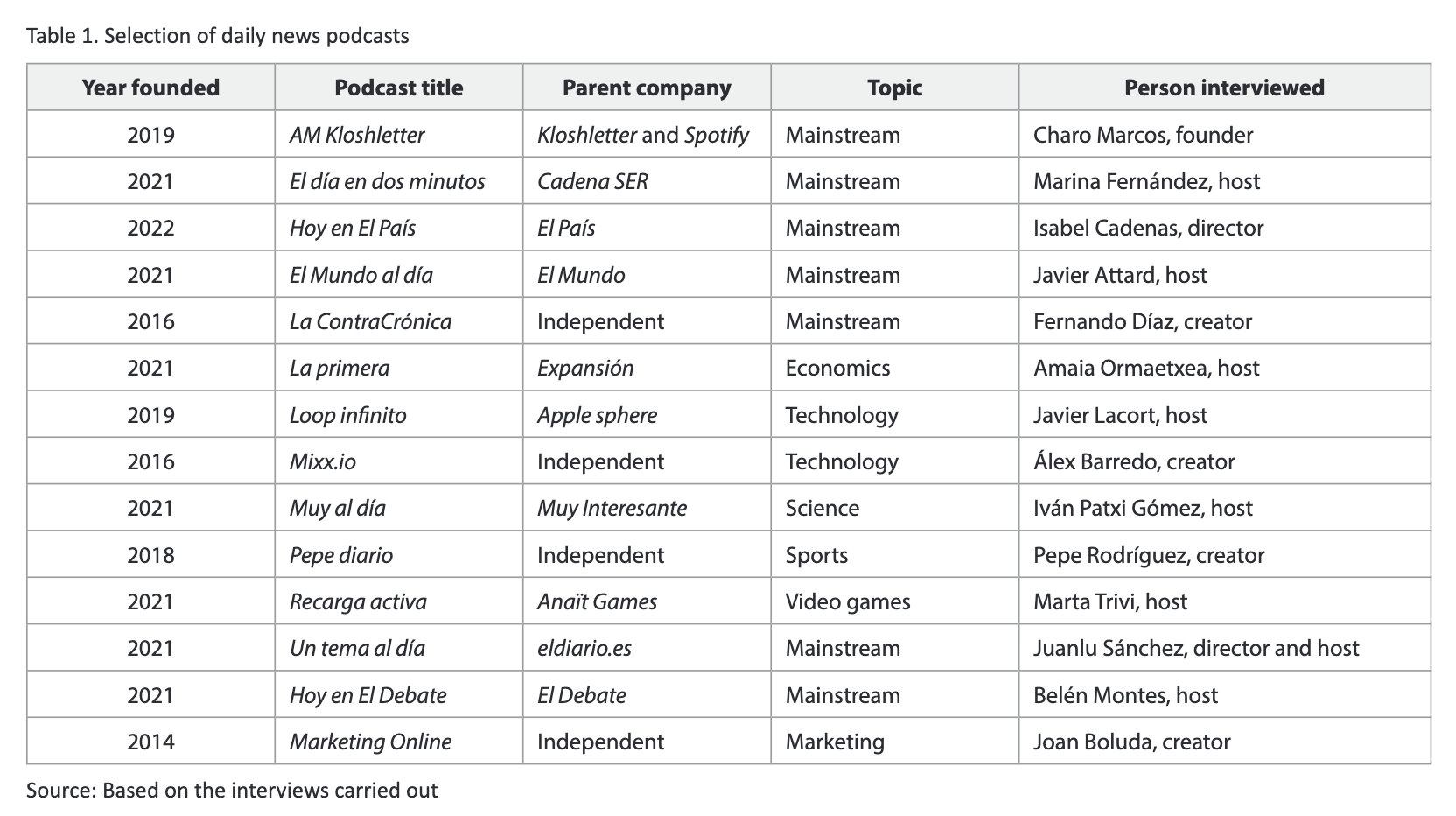
In 2015, students at what’s now the Craig Newmark Graduate School of Journalism set out to solve a few different problems in Spanish-language podcasting. Chief among the problems they identified: A lack of community for independent podcasts to grow their audiences and build sustainable revenue streams.
Co-founders Ana Ormachea, Luis Quevedo, Pablo Juanarena, and Angel Jimenez launched Cuonda, a podcasting platform to help Spanish-language podcasts get standardized metrics for their shows to secure sponsorship and cross-promotion deals.
Seven years later, Ormachea is the chief digital officer for Prisa Radio, in charge of the audio-first strategy for the world’s biggest Spanish-language audio production company. Prisa Radio is one wing of Prisa, a Spanish media conglomerate that also owns daily newspaper El País, sports daily AS, news radio station Cadena SER, El HuffPost, and Podium, a platform that, like Cuonda, supports podcasts by helping them find advertising deals and revenue.
These investments in Spanish-language audio are starting to pay off. Daily news podcasts in Spain are gaining momentum, according to a new analysis of the country’s audio landscape.
Researchers from Spain’s Miguel Hernández University of Elche in Spain looked at the 14 top daily original news podcasts on the Spanish podcast discovery platform iVoox and on Apple Podcasts. Of the 14, 10 are produced by Spanish news outlets like El País, El Mundo, El Diario, and Cadena SER. The remaining four are produced by independent podcasters.

In Spain, 41% of the population reported listening to a podcast at least once a month in 2021. Spanish media companies first started getting into daily news podcasts in 2018, releasing short news bulletins for smart speakers, the report’s authors — Miguel Carvajal, Cristian-Ramón Marín-Sanchiz, and Carlos J. Navas — write. Over the last couple of years, the country’s legacy news outlets have launched more in-depth news podcasts, following in the footsteps of shows like The New York Times’ The Daily and The Guardian’s Today in Focus. The researchers interviewed the founders, creators, or hosts for each podcast and asked them about their business models.
“Finding the product/market fit is more important than creating a big production in terms of sound design and script,” Marín Sanchiz told me in an email, adding, “When trying to make users build a habit, it is vital to intertwine the podcast with their routines…it’s a format that rewards a bit of journalistic intuition, as it’s almost impossible to build podcasts to just fit searches and platform algorithms.”
The report doesn’t formally compare Spanish news podcasts to those from other countries, but Carvajal said that half of the podcasts — including ones produced by legacy news organizations — had just one person working on them. El País’ podcast team is the largest and an outlier in the sample, with 10 people working on its daily podcast Hoy en El País. Eight of the 14 podcasts in the study launched between 2021 and 2022, mostly from mainstream outlets that were either launching or revamping their subscription businesses.
“The podcast sphere in Spain has been [historically] characterized by pioneers from outside the media industry, mostly entrepreneurs focused on niches, and monetization was always [an afterthought],” Carvajal told me in an email. “On the distribution side, Apple Podcasts never had the weight that it did in places like the United States due to low usage of Apple products…It wasn’t until Podium and Cuonda launched that there was an explosion of journalistic, narrative podcasts. The Serial phenomenon, the [success of] daily news podcasts in the United States and the United Kingdom, and the increase in podcast consumption in Spain woke up journalistic producers.”
Listenership varies widely among the 14 podcasts, and the researchers noted that the survey respondents had a “negative view” of the tools and data available to understand podcast audiences (though this isn’t a problem unique to Spain). The producers of the independent podcasts, however, reported their listenership as being largely on par with that of the podcasts from major news outlets.
“The daily news podcasts in international media tend to deal with immediate, current events, but they also delve into long-term or evergreen issues,” Carvajal said. “In that sense, they are similar to the niche podcasts we chose that deal with topics relevant to their communities.”
Marketing Online, a niche podcast about the marketing industry launched in 2014 by Joan Boluda, reported 65,000 listens per episode, while Hoy en El País by El País (launched in 2022) and La ContraCrónica by independent journalist and creator Fernando Díaz Villanueva (launched in 2016) each reported 50,000 listens per episode.
The study shows that podcasters have different goals in getting into the audio industry: major media outlets are focused on building trust and personal relationships with listeners and reaching new audiences, while independent creators tend to focus on carving out space for themselves in their niche in a sustainable way.
All are interested and focused on audience and business growth and sustainability, though revenue data was not included in the study. So far, podcasts have been helpful to national newspapers as they bolster their subscription offerings and create new revenue streams, mainly through sponsorship and advertising. Independent podcasts have more diversified revenue streams, which include sponsorships, programmatic advertising, corporate services, among others. Mixx.io, a daily newsletter and podcast about tech that works with Cuonda, for example, reported €45,000 in annual revenue from sponsorships, while La ContraCrónica has 3,000 patrons on Patreon in addition to revenue from advertising, affiliate linking, and selling merchandise.
You can read the full study here.